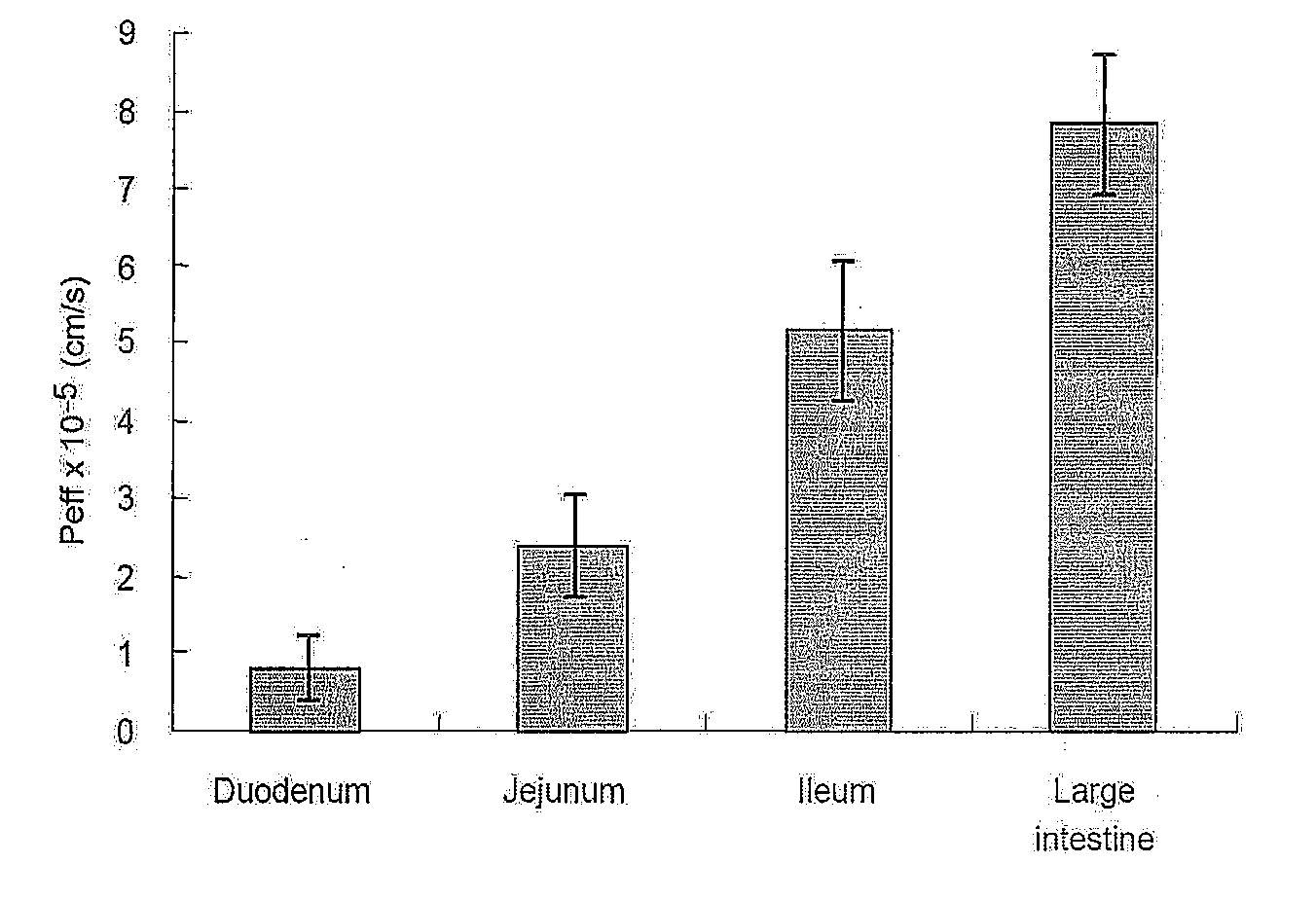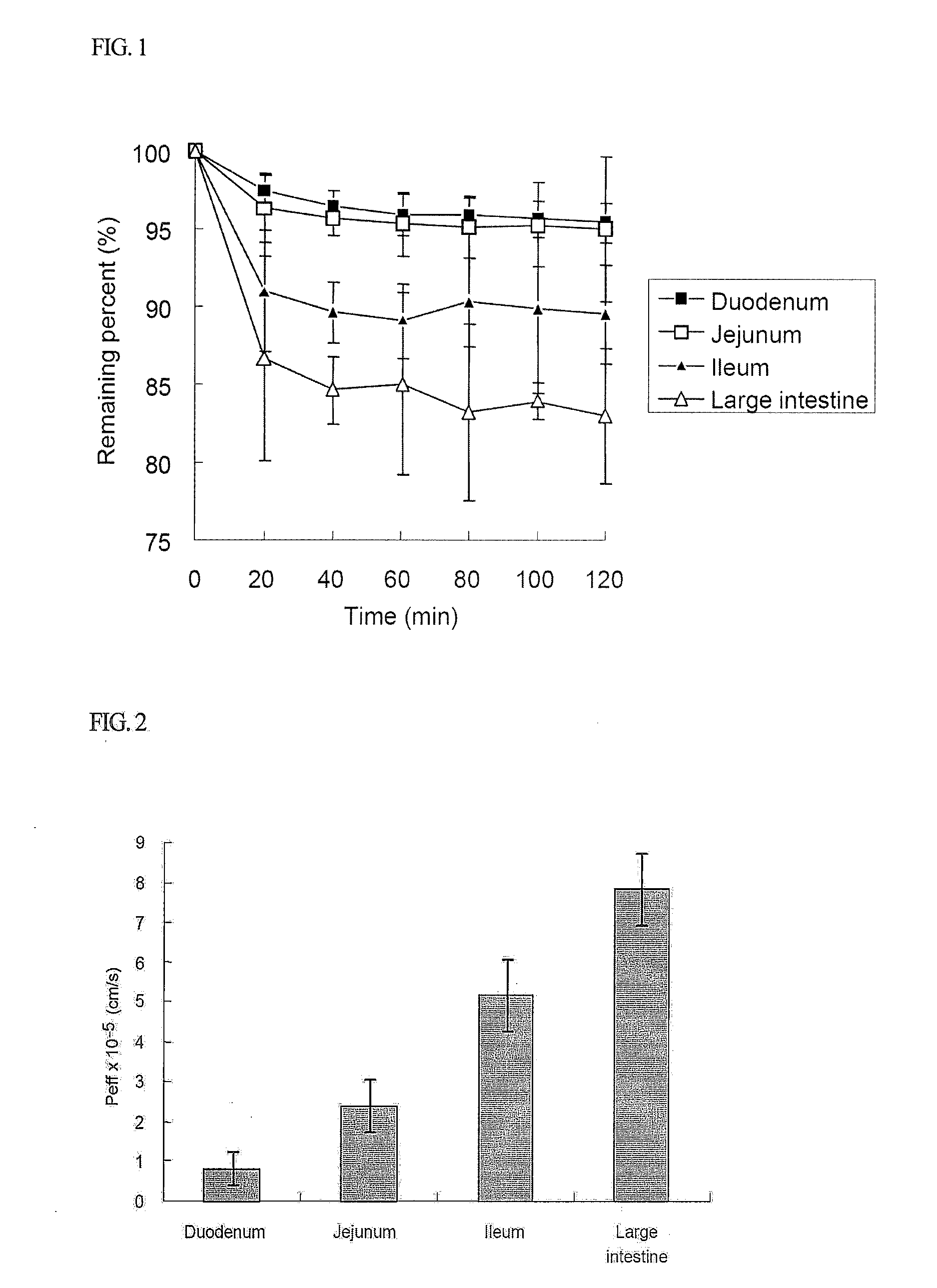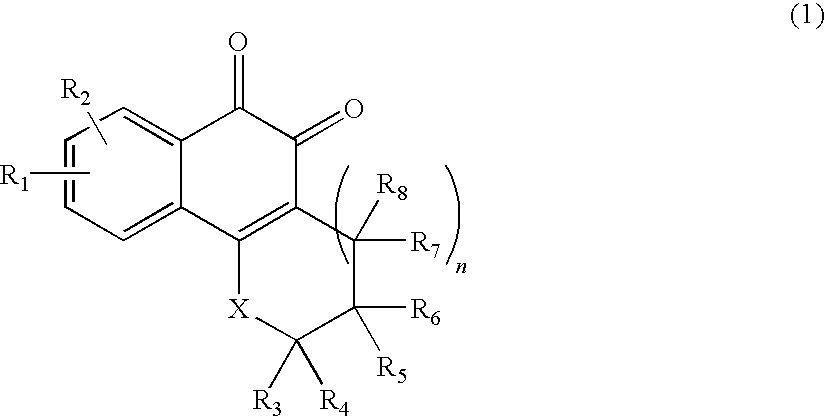Pharmaceutical composition containing naphthoquinone-based compound for intestine delivery system
a naphthoquinone-based compound and pharmaceutical composition technology, which is applied in the field of oral pharmaceutical compositions, can solve the problems of poor soluble aforesaid naphthoquinone-based compound, a significant limitation in the formulation of the compound into the desired pharmaceutical preparation, and the above highly insoluble naphthoquinone-based compound suffers from various difficulties, so as to improve the drug release rate, reduce the bioavailability variation of naphthoquino
- Summary
- Abstract
- Description
- Claims
- Application Information
AI Technical Summary
Benefits of technology
Problems solved by technology
Method used
Image
Examples
experimental example 1
Determination of Partition Coefficients
[0113]Octanol and phosphate buffer (pH 7.4) were saturated with a counter-solvent for 24 hours or more. A given amount of a naphthoquinone-based compound (Compound 1 of Table 1 below) was dissolved in the thus-saturated octanol, mixed with triple-distilled water and stirred using a magnetic stirrer at 200 rpm for 13 hours or more. Samples were taken, filtered through a 0.45 μm RC Membrane filter and diluted with methanol. The diluted sample materials were analyzed by HPLC. A partition coefficient versus an amount of Compound 1 was determined. The results thus obtained are given in Table 2.
TABLE 2SamplePartition Coefficientμg / mL1231002.172.021.992002.402.202.2420002.592.622.58Excess2.652.052.08* average partition coefficient: 2.299 (σ = 0.255)
[0114]As can be seen from Table 1, the partition coefficient was a value of 2.299, thus representing that Compound 1 is relatively fat-soluble. This result means that Compound 1 has octanol-solubility 100-f...
example 1
Micronization of Active Ingredient Using Jet Mill
[0115]Micronizing of an active ingredient was carried out using a Jet mill (SJ-100, Nisshin, Japan). Operation was run at a supply pressure of 0.65 Mpa, and a feed rate of 50 to 100 g / hr. 0.2 g of sodium lauryl sulfate (SLS) and 10 g of a naphthoquinone-based compound (Compound 1 of Table 1) were mixed and ground. Micronized particles were recovered and a particle size was determined by zeta potential measurement. An average particle diameter was 1500 nm.
example 2
Preparation of Spray-Dried Product
[0116]The synthesized naphthoquinone-based compound (Compound 1 of Table 1) or the naphthoquinone-based compound of Example 1 (including micronized and non-micronized particles) was added to methylene chloride, and a salt such as sodium chloride, a saccharide such as white sugar or lactose, or a vehicle such as microcrystalline cellulose, monobasic calcium phosphate, starch or mannitol, a lubricant such as magnesium stearate, talc or glyceryl behenate, and a solubilizer such as Poloxamer were added to a given amount of ethanol, followed by homogeneous dispersion to prepare a spray-drying solution which will be used for subsequent spray-drying.
PUM
| Property | Measurement | Unit |
|---|---|---|
| particle diameters | aaaaa | aaaaa |
| temperature | aaaaa | aaaaa |
| particle diameter | aaaaa | aaaaa |
Abstract
Description
Claims
Application Information
 Login to View More
Login to View More - R&D
- Intellectual Property
- Life Sciences
- Materials
- Tech Scout
- Unparalleled Data Quality
- Higher Quality Content
- 60% Fewer Hallucinations
Browse by: Latest US Patents, China's latest patents, Technical Efficacy Thesaurus, Application Domain, Technology Topic, Popular Technical Reports.
© 2025 PatSnap. All rights reserved.Legal|Privacy policy|Modern Slavery Act Transparency Statement|Sitemap|About US| Contact US: help@patsnap.com



